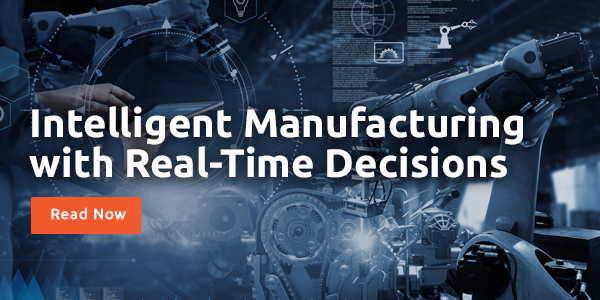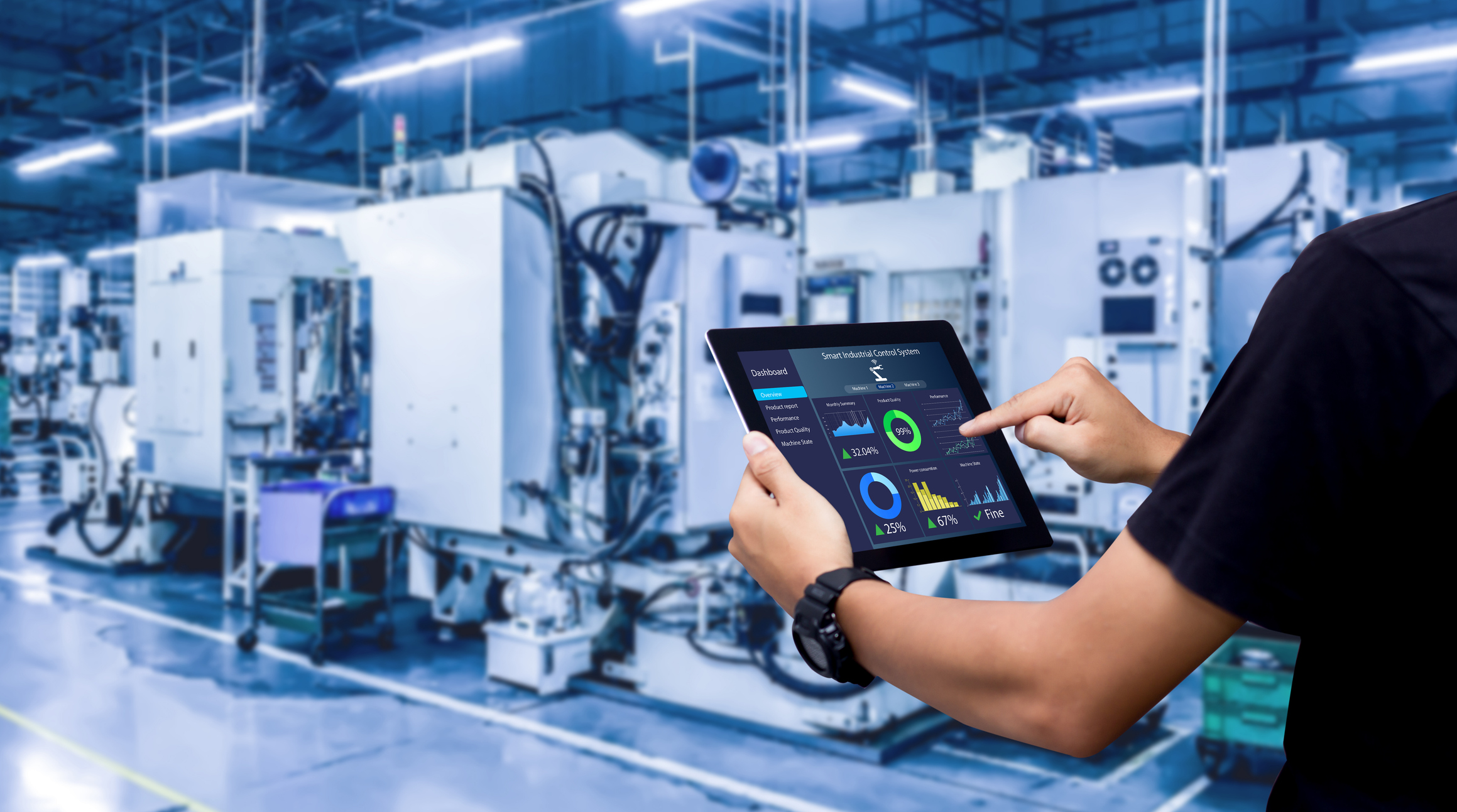Key Takeaways
- La manutenzione preventiva basata sull’intelligenza artificiale utilizza dati in tempo reale e algoritmi di apprendimento automatico (ML) per prevedere i guasti delle apparecchiature prima che si verifichino, riducendo i tempi di inattività e ottimizzando i programmi di riparazione.
- Gli algoritmi di intelligenza artificiale, combinati con i dati IIoT provenienti da sensori visivi, telecamere termiche e rilevatori acustici, possono automatizzare e migliorare i processi di controllo qualità, garantendo che solo i prodotti che soddisfano elevati standard di qualità avanzino nel processo di produzione.
- Con i sensori AI e IIoT che monitorano il consumo di energia attraverso le apparecchiature, gli algoritmi di intelligenza artificiale possono analizzare i modelli e rilevare le inefficienze, alimentando sistemi di gestione dell’energia basati sull’intelligenza artificiale che raccomandano modelli di utilizzo dell’energia ottimali, regolano automaticamente i sistemi HVAC e controllano l’illuminazione per ridurre al minimo gli sprechi.
- L’intelligenza artificiale può ottimizzare le catene di fornitura analizzando i dati provenienti da sensori e sistemi GPS sui veicoli, sistemi di inventario e previsioni della domanda, prevedendo i modelli della domanda, regolando i livelli di inventario e raccomandando percorsi alternativi in tempo reale per evitare ritardi.
- Combinando l’intelligenza artificiale con dispositivi indossabili e sensori IIoT, le organizzazioni possono monitorare le condizioni di sicurezza in tempo reale, rilevare situazioni potenzialmente pericolose e inviare avvisi per prevenire incidenti, migliorando la sicurezza dei lavoratori e la conformità alle normative.
As the Industrial Internet of Things (IIoT) gains traction, AI technologies are transforming how industrial organizations monitor, manage, and optimize their assets and use their data. By leveraging real-time data from connected devices, IIoT-based companies such as auto manufacturers can make data-driven decisions faster than ever before to achieve things like preventative maintenance.
Read on to explore the top five AI use cases for IIoT, and how AI and IIoT, when combined with Volt Active Data, unlock efficiencies, enhance safety, and drive cost savings.
1. Preventative Maintenance
Challenge: Industrial equipment failures can lead to costly downtime, impacting productivity and revenue. Traditional scheduled maintenance often results in unnecessary repairs or overlooked issues.
Solution: AI-driven preventative maintenance uses real-time data and machine learning (ML) algorithms to predict equipment failures before they happen. With sensors that continuously monitor the performance of machinery, AI algorithms analyze trends and identify deviations from normal operating conditions. Preventative maintenance helps organizations address issues before they escalate into full-blown equipment failures.
Impact: Reduced downtime, optimized repair schedules, and prolonged asset life all translate to significant cost savings. Volt supports preventative maintenance by providing a high-speed data processing platform that handles time-series data from thousands of sensors, enabling real-time anomaly detection and rapid response.
2. Quality Control
Challenge: Quality control in manufacturing is essential for maintaining brand reputation and customer satisfaction. Manual inspections can be time-consuming, subjective, and error-prone.
Solution: AI algorithms, combined with IIoT data from visual sensors, thermal cameras, and sound detectors, can automate and enhance quality control processes. Machine learning models can quickly identify defects, ensuring that only products meeting high-quality standards move forward in the production process.
Impact: AI-powered quality control results in fewer defects, faster identification of manufacturing errors, and less waste. Volt’s ability to process and analyze streaming data allows manufacturers to make quick decisions based on real-time inspection data, improving product consistency and reducing rework.
3. Energy Management
Challenge: Energy-intensive industries face high utility costs and pressure to reduce their carbon footprints. However, identifying opportunities for energy savings in real time is challenging without the right tools.
Solution: With AI and IIoT sensors monitoring energy consumption across equipment, AI algorithms can analyze patterns and detect inefficiencies. This data can power AI-driven energy management systems that recommend optimal energy usage patterns, automatically adjust HVAC systems, and control lighting to minimize waste.
Impact: AI-driven energy management leads to significant cost savings and contributes to sustainability goals. Volt’s architecture supports energy management applications with its low-latency, high-availability data processing, making it ideal for tracking and optimizing real-time energy usage across industrial sites.
4. Supply Chain Optimization
Challenge: Managing supply chain logistics is complex, especially in industries where just-in-time inventory and rapid delivery are crucial. Any delays or disruptions can lead to increased costs and customer dissatisfaction.
Solution: AI can optimize supply chains by analyzing data from sensors and GPS systems on vehicles, inventory systems, and demand forecasts. Through machine learning models, AI predicts demand patterns, adjusts inventory levels, and recommends alternate routes in real-time to avoid delays. Volt helps make these real-time decisions possible by providing rapid data processing capabilities, which is essential for managing large amounts of data from various touchpoints in the supply chain.
Impact: Optimized supply chains result in better inventory management, reduced transportation costs, and improved customer satisfaction. With Volt, businesses gain real-time insights into their supply chains, enabling them to respond to changes swiftly and effectively to keep their supply chains moving seamlessly.
5. Worker Safety and Compliance
Challenge: Worker safety is a top priority in industrial environments, where machinery and hazardous materials can pose risks. Preventing accidents and ensuring compliance with safety standards is essential for protecting employees and avoiding legal liabilities.
Solution: By combining AI with wearable devices and IIoT sensors, organizations can monitor safety conditions in real time. AI can detect potentially dangerous situations, such as a worker entering a restricted area or machinery operating outside safe parameters, and send alerts to prevent accidents.
Impact: Enhanced worker safety and improved compliance with regulations reduce workplace accidents and associated costs. Volt Active Data’s ability to process real-time data from wearables and environmental sensors makes it a powerful platform for building AI-driven safety solutions.
Conclusion
AI and IIoT are a transformative combination, enabling industrial organizations to harness real-time data for smarter, faster decision-making. From predictive maintenance to worker safety, these use cases highlight how AI-driven insights can improve industrial operations.
Volt Active Data plays a crucial role in supporting these applications by providing a fast, reliable data platform optimized for real-time decision-making, ensuring that IIoT applications can meet the demands of modern industry.
For industrial companies looking to future-proof their operations, integrating AI and IIoT with a robust platform like Volt Active Data is essential for staying competitive.



